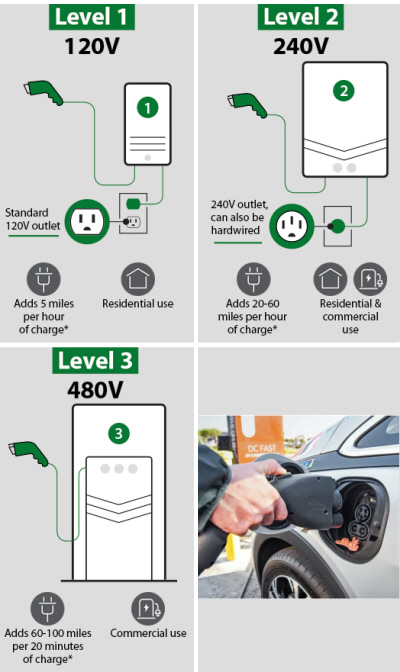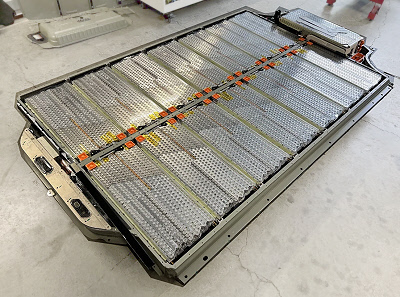M. Shire's
Ideas

EV Batteries |
 |
Page 1 |


 The Problem with Electric.
The Problem with Electric.
 Everyone who's considering buying a car in the future has read the news about the problems of electric cars . We know that there's a huge array of heavy batteries stuck in the base/chassis of EV cars . The top problems for these cars are
Everyone who's considering buying a car in the future has read the news about the problems of electric cars . We know that there's a huge array of heavy batteries stuck in the base/chassis of EV cars . The top problems for these cars are

 1. They take too long to charge.
1. They take too long to charge.

 2. The range of miles is not very good.
2. The range of miles is not very good.

 3. In 10 to 15 years they need replacing.
3. In 10 to 15 years they need replacing.

 4. They're very expensive, between $6K to $20K.
4. They're very expensive, between $6K to $20K.
 You got to kind of factor that in the cost of the car.
You got to kind of factor that in the cost of the car.
 For the charging system there's three levels ...
For the charging system there's three levels ...


I thought a lot about this and the designers could have made the batteries to be easily exchangeable . Now if somebody could do that, even aftermarket, then imagine one battery array could be charging all day long while you're at work. Then when you get home can exchange your depleted battery for one fully charged for the next day. So every day one battery is charging For 24 hours and getting a complete full charge.
|
 Now take this one step further in our thought experiment, and imagine a gas station / battery exchange station (let's call it an EV BE station) that could have a perfect replacement battery for you already fully charged and all they do is exchange it. If it was designed well, it can be changed in 5 minutes. That's about how long it takes to fill up a gas tank. Of course there has to be a computer test on your old battery to make sure that there's no problems with it. So that's part of the service ... testing your battery pack and the new battery pack to make sure that they are in perfect working condition. If one or more of the little cells within it need exchanging then it's up to the service station to exchange that and make sure to have in stock 100% reliable, fully charged battery arrays. If your old battery is in good condition then you only pay for what it cost to fully charge the battery. Probably have to credit you whatever leftover charge you currently have in the batteries.
Now take this one step further in our thought experiment, and imagine a gas station / battery exchange station (let's call it an EV BE station) that could have a perfect replacement battery for you already fully charged and all they do is exchange it. If it was designed well, it can be changed in 5 minutes. That's about how long it takes to fill up a gas tank. Of course there has to be a computer test on your old battery to make sure that there's no problems with it. So that's part of the service ... testing your battery pack and the new battery pack to make sure that they are in perfect working condition. If one or more of the little cells within it need exchanging then it's up to the service station to exchange that and make sure to have in stock 100% reliable, fully charged battery arrays. If your old battery is in good condition then you only pay for what it cost to fully charge the battery. Probably have to credit you whatever leftover charge you currently have in the batteries.
 As an amateur engineer, (with basic farmer common sense), I think a simple scissor lift with four wheels can be used to easily lift the array into place. A commercial service station would have a slick designed lifting robotic arm to put the battery into place.
As an amateur engineer, (with basic farmer common sense), I think a simple scissor lift with four wheels can be used to easily lift the array into place. A commercial service station would have a slick designed lifting robotic arm to put the battery into place.
 Something else that could even be a better system. Instead of one giant heavy array there could be a number of one foot square modules . So for example a Prius gets 8 modules while a cyber truck gets 20 modules. Each module would have its own barcode and you could track how many hours and for how many cycles of charge that it's had. Then instead of replacing the entire heavy array you have a lower drawer under the car, that unlocks, lowers, and slides out. You then can replace modules individually.
Something else that could even be a better system. Instead of one giant heavy array there could be a number of one foot square modules . So for example a Prius gets 8 modules while a cyber truck gets 20 modules. Each module would have its own barcode and you could track how many hours and for how many cycles of charge that it's had. Then instead of replacing the entire heavy array you have a lower drawer under the car, that unlocks, lowers, and slides out. You then can replace modules individually.

 The only problem with all of this would be standardized battery size. For example when they came out with AAA battery that's been used for maybe 50 years now. But if we look at car lead batteries, when you go to an AutoZone, there's like 20+ sizes for everything between Acura and Z-28.
The only problem with all of this would be standardized battery size. For example when they came out with AAA battery that's been used for maybe 50 years now. But if we look at car lead batteries, when you go to an AutoZone, there's like 20+ sizes for everything between Acura and Z-28.
|
 Note: It would help if all Tesla modules were the same or if all GM modules we're interchangeable. This is the problem they have with the charging cables. What they need is the American National Standards Institute, which oversees development standards for products, including batteries.
Note: It would help if all Tesla modules were the same or if all GM modules we're interchangeable. This is the problem they have with the charging cables. What they need is the American National Standards Institute, which oversees development standards for products, including batteries.
|
|
Copyright - ©2024, Michael Shire |
|